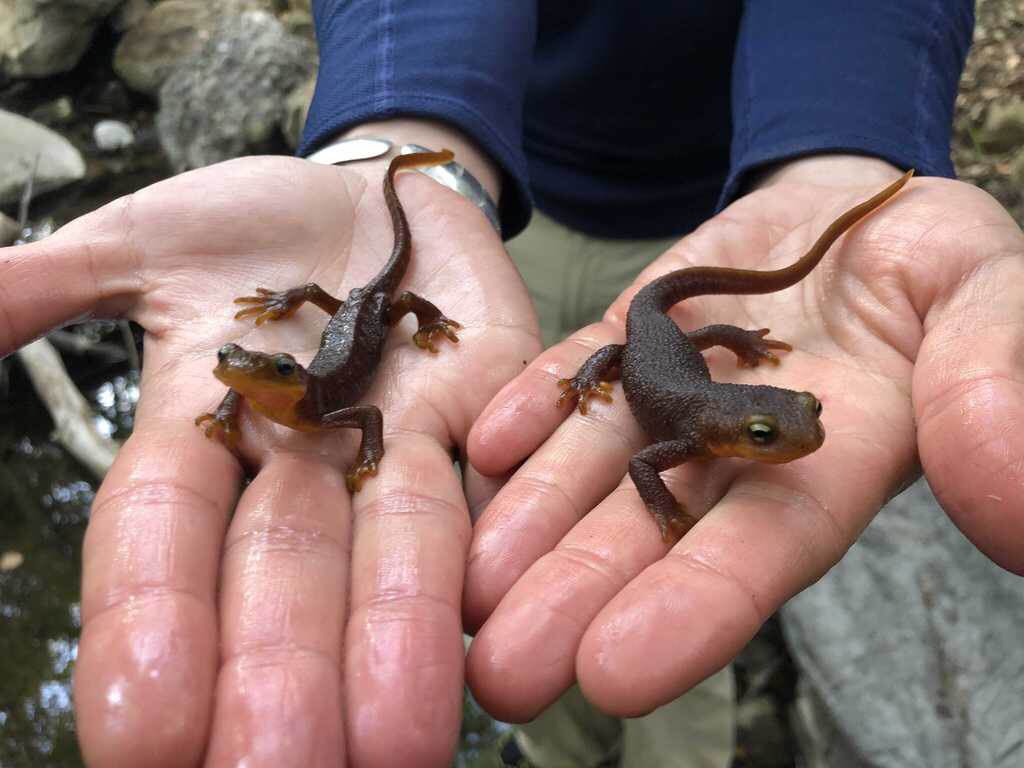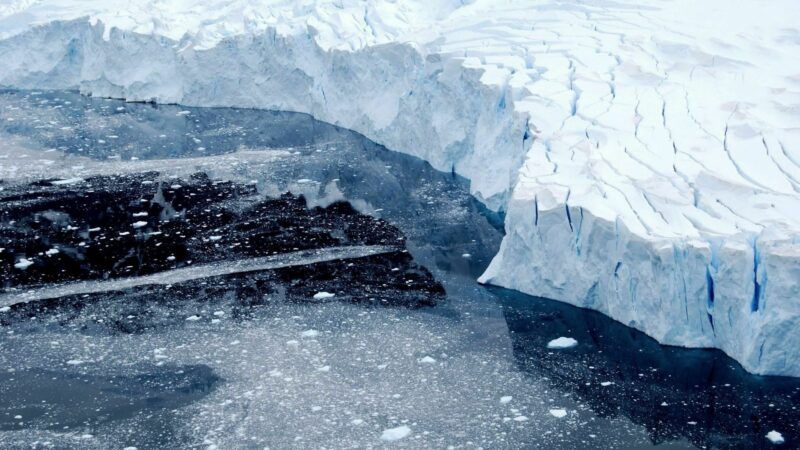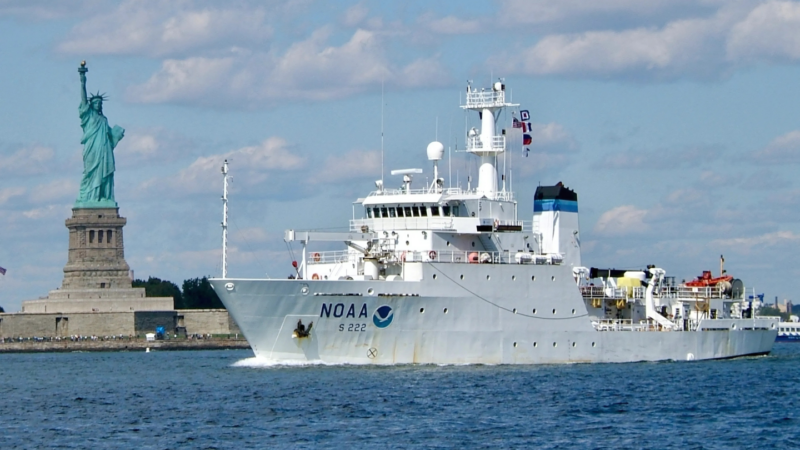
As climate change messes with temperature and precipitation, California newts suffer
Study shows how drought affects native amphibians, harbingers of what’s to come
California didn’t get much of a break.
Just three years after the 2011–2017 drought, one of the severest in recorded history for the state, the driest February in 150 years has spurred discussion of whether we’re in another drought — or if the last one even ended.
That’s bad news for Los Angeles’ only newt, California newt, Taricha torosa, and other newts in the Taricha genus, particularly in the southern half of the state south of Big Sur. A UCLA-led study, in the Nature journal Scientific Reports examined body condition of newts across their entire range, from San Diego to Mendocino. In the south, researchers discovered that body condition — a measure of health that compares weight to length — decreased by an average of 20% from 2008–2016.
The study found that newts in the north didn’t show a significant decline in body condition, as did the southern populations. But the authors predicted that newts in more northern regions, such as the Bay Area, would experience similar decreases to body condition if future climatic conditions in the north mirror recent climatic conditions in Southern California.
With less body mass, newts are prone to diseases and less likely to survive and breed, said UCLA conservation biologist and lead author Gary Bucciarelli.
“What we observed was extremely outside of what we predicted, based on body condition in the years leading up to the drought,” Bucciarelli said.
The large-scale research effort involved catching and measuring thousands of newts from streams and ponds during peak breeding season in the spring. Students, researchers, faculty and government agency staff all participated in the fieldwork.
The decline was worse than what models had predicted during an extended drought. In the Santa Monica Mountains, researchers have tracked one population for more than 25 years, marking and recapturing individual newts to see how they fare over time. More than two-thirds showed a decline in body condition.
Co-author Seth Riley, a wildlife expert at the National Park Service, said the study is part of a larger effort to try to understand how climate change will affect amphibians across the state, including California and Pacific tree frogs and western toads.
The unexpected results might not make sense if it weren’t for the elephant in the room — climate change — that is causing temperatures to rise and making extreme dry and wet weather more common.
“You see huge climate change impacts at the North Pole or Antarctica, or very high altitudes,” Riley said. “This study shows the impacts of temperature and precipitation here in Southern California where we think things may not be as extreme as in these other places.”
Riley said it’s important to not just pay attention to federally protected endangered species or charismatic animals such as mountain lions, but also to monitor wildlife that isn’t facing extinction. In California, he said, what happens in the southern part of the state may portend future impacts to newts and other species in the northern part.
Amphibians are among the most threatened species in the Anthropocene extinction, an ongoing mass extinction event that results from human activity. They are estimated to experience an extinction rate 45,000 times greater than the rate at which they disappear without human influence.
“Amphibians get hit hard by this stuff,” said Brad Shaffer, study co-author and UCLA distinguished professor of ecology and evolutionary biology. “They’re so dependent on moisture. If it’s hot and dry, it really hammers them harder than it does more mobile animals.”
It’s not just climate change. Human impacts also include land use and development, pollution, the introduction of invasive species such as crayfish, and increased wildfire frequency. Because amphibians are highly susceptible to environmental changes — and depend on land and aquatic habitats — they are seen in conservation as harbingers for what could happen with other species, Bucciarelli said.
So what can be done? The answer isn’t entirely clear. Areas newts depend on could be better monitored and protected. But conservation efforts may simply be a stopgap solution while the world attempts to slow and mitigate the effects of climate change.
It can get personal when you look a newt in the eye, even for professionals who spend their careers studying wildlife.
“This is a biological equivalent of seeing Antarctica glaciers melting,” Shaffer said. “When you actually see that happen in your face, it’s really striking.”
“I think we’re getting past the point where we can say, ‘Mother nature can take care of herself,’” he added. “We’re going to have to be much more proactive. The most obvious action is assisted migration — moving animals that aren’t good at migrating to more favorable environments. But it’s hard to know what the appropriate interventions would even be. From a moral or ethical perspective, we’d like to be doing more than just watching them go down.”
Shaffer maintained that hope remains in such stopgap measures. Things may get worse, but they may get better. People’s behavior could change, and climate change might veer in a new direction. Assisting species in getting over the hump may prove to be a valuable part of the process.
Top image: Two newts from SoCal, the newt on the left showing 20% reduced body condition. | Photo via Gary Bucciarelli/UCLA
Published:


